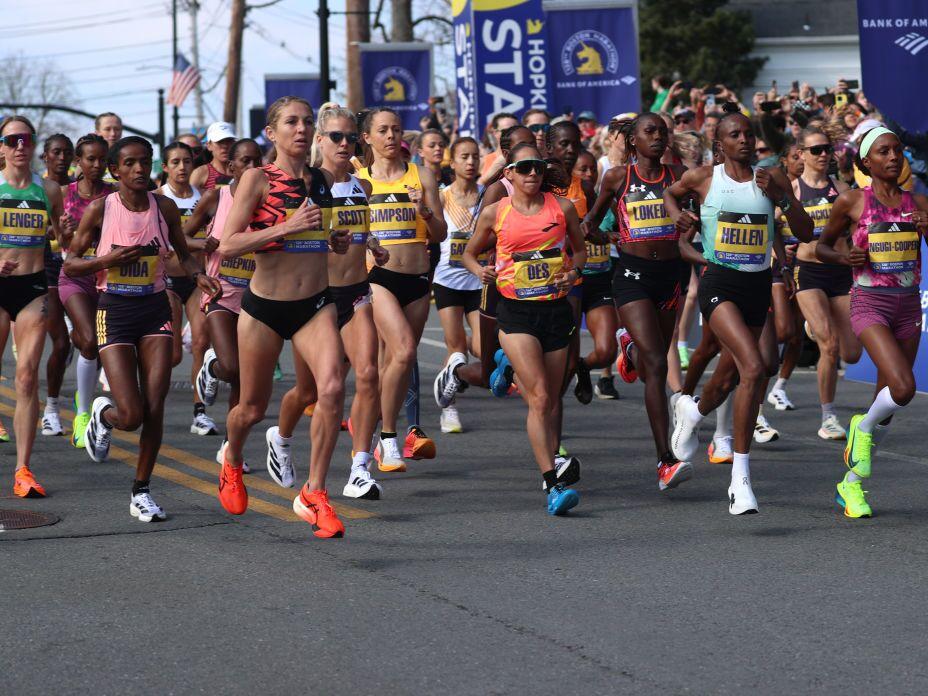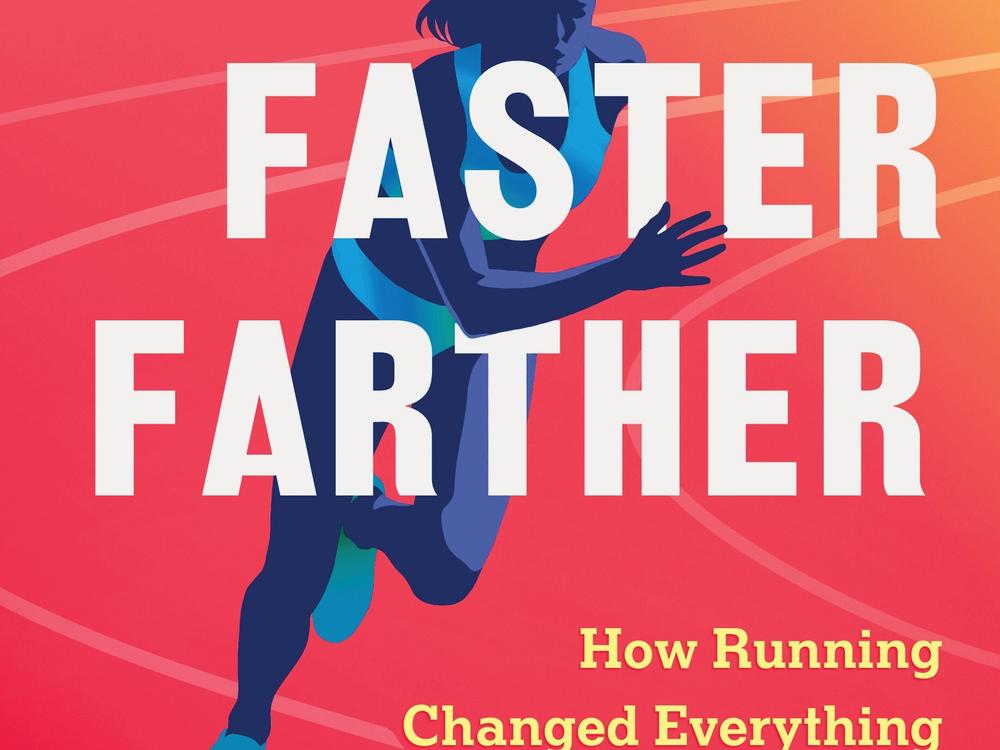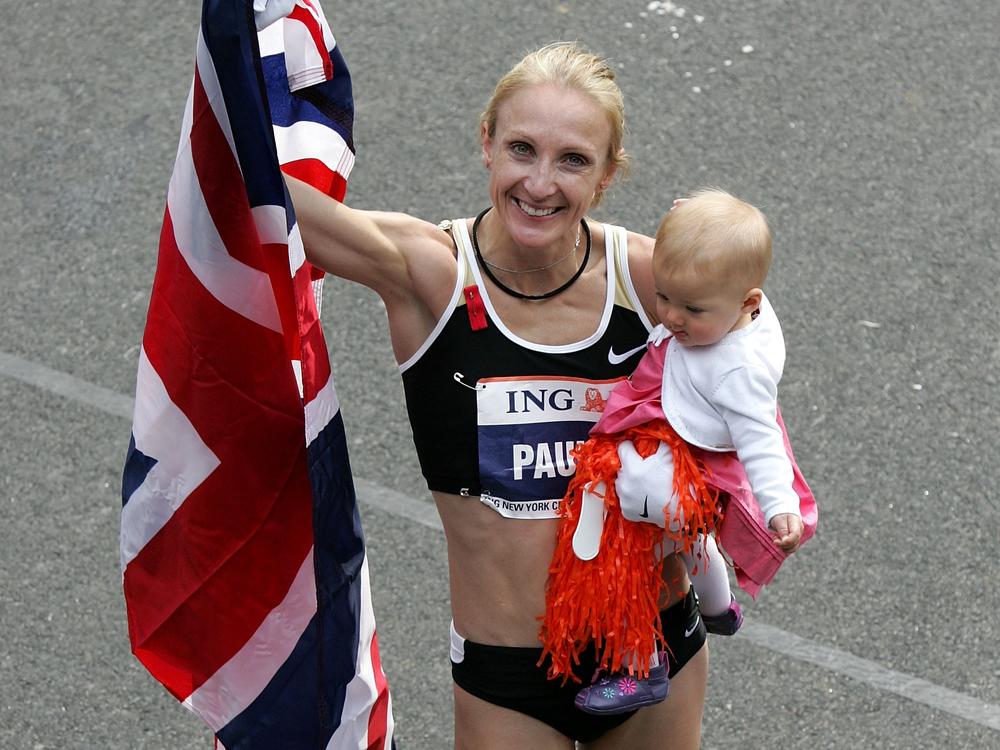Section Branding
Header Content
No, running won’t make you infertile. 8 sexist myths women runners disproved
Primary Content
Myths about women in sport date back at least to the dawn of the Olympics 2,800 years ago, when women weren’t allowed to compete. These myths “remain hard to shake,” according to sports journalist Maggie Mertens. For instance, it wasn't until 1972 that women were allowed to run in the Boston Marathon — it was considered too long and grueling for them physiologically.
In her new book, Better Faster Farther: How Running Changed Everything We Know About Women (released June 18), Mertens explores misconceptions about female athletes — and how through running, women have disproved these myths.
Running, says Mertens, “has been used for years and years and years to define women as being lesser than men.” This has caused women to receive less compensation, access, health support and recognition than their male peers in sport.
Better Faster Farther is a relevant read right now, as the Summer Games are set to kick off July 26 in Paris. This year is also the 40th anniversary of the Olympics women’s marathon. “My hope is that it adds a lot of historic context,” Mertens says, “and connects a lot of dots to the issues we’re seeing play out in women’s sports — the inequalities.”
Here are eight ways the world has misjudged women runners and how they’ve fought to make the sport their own.
1. Running is a "menace" to women’s health and fertility
The belief that a woman’s uterus might fall out if she pushed herself too hard physically was not entirely fringe even by the turn of the 20th century.
Mertens notes that “many doctors” argued that “women taking part in competitive sport would end up hurting the very thing that ‘made them women’ — their fertility.” The 1924 issue of American Physical Education Review declared: “national or international competition is a menace to womanhood.”
Another doctor — commissioned by the Women’s Athletic Association to evaluate the safety of women in competitive running — noted that even if women runners appeared to be doing OK, the upshot of athleticism might ultimately be “very deleterious to the girls’ health and natural functions.”
It turns out, of course, that it’s just the opposite. Just one example: Girls need exercise as adolescents to boost bone health and prevent osteoporosis.
2. Women are slower than men
While working on her book, Mertens realized something: “Maybe the reason we see women in a certain light is because of stereotypes or stories that have been told for a really long time.”
One of those stereotypes is that women are simply, under any circumstances, slower than men.
In many races, the speed gaps are shrinking. According to today’s world records, women run a 25-second slower mile than men, and women are only one second shy of men in the 100-meter. In the 2023 Boston Marathon, Hellen Obiri, the winner of the women’s division, finished ahead of more than a third of the pro men. And in ultrarunning, women have proved that they can, in fact, outpace men.
“We don’t need to constantly be separated into two distinct buckets when we’re talking about people and what we’re physically capable of,” Mertens writes.
3. 800 meters — let alone a mile — is too far for a woman to run
In 1928, the longest race a woman could compete in was the 800 meter — two laps around a track. But following that year’s Olympic 800-meter women’s race, false rumors spread that many of the competitors had collapsed. As a result, the 800 was eliminated for women and wasn’t reinstated until 1960, while the 1,500 wasn’t added until 1972.
One key downside of eliminating a race from international sport is that world records for that distance simply don’t exist. So when British runner Diane Leather broke the five-minute mile in 1954, she didn’t bag the official world record because it wasn’t even a thing.
Today, women have the opportunity to run all the same races men do. But Mertens reflects that one of the most surprising things she discovered in her research is “how much gatekeeping there has been for women runners in terms of what they were and weren’t allowed to even try.”
4. A female marathoner is a medical liability
The first woman who ran the Boston Marathon wasn’t supposed to be there. In 1966, Bobbi Gibb snuck into the race, having been denied by the race director, who didn’t want to assume “the medical liability.” Women aren’t “physiologically able to run twenty-six miles,” the race director claimed in Gibb’s rejected application.
“To me, that’s pretty wild,” Mertens says of this moment in history, less than a century ago. “That’s my mom’s generation. To think that in one generation things changed so much was really shocking.”
For the race, Gibb wore Bermuda shorts and a hooded sweatshirt to obscure her gender, along with a bathing suit — the sports bra hadn’t been invented yet. Her shoes gave her blisters. Yet she still became the first woman to complete the Boston Marathon, finishing ahead of two-thirds of the men that year, with a time of 3 hours, 21 minutes and 40 seconds. The Boston Marathon officially allowed women to race in 1972.
5. An ultra? Also too far for a female
Given all the shortchanging of women in running 800 meters, a mile or a marathon, it’s no shocker that women were also written off when it came to longer distances. So when ultrarunning — defined as anything longer than a marathon — emerged in Britain in the mid-19th century, women were banned.
Yet it turns out that this is the one running forum in which women do outpace men. One example: In the 2019 Spine Race, a brutal 268-mile run from England up to Scotland held every January, the winner Jasmin Paris was faster than all the male competitors and even broke the route’s record by 12 hours.
“It does show that women have a lot of athletic capabilities that aren’t as prized in some of the other sports we pay more attention to,” Mertens says of the success of women in ultrarunning. “I love the proof that our athleticism can rise to the top."
6. Thinner equals faster when it comes to women in running
The misconception that the thinner you are, the faster you are is a dangerous one that, as Mertens writes, arguably wrecked the careers of women runners like Leslie Heywood and Mary Decker.
Based on that erroneous belief, many runners were told to lose weight to improve performance, leading to obsessive dieting and training. “This became a terribly dangerous combination, especially for young women runners,” Mertens writes.
What happened was that women — as well as teenage girls — under-ate and overtrained, causing them to lose their periods, a condition known as amenorrhea. Consequently, these female athletes developed osteoporosis and were susceptible to fractures and broken bones. Many developed eating disorders.
Furthermore, the blame is often shifted to the runner for her eating disorder and recurring injuries, rather than to the lack of information — or the misinformation — that she received. Even today, Mertens explains that for women runners, misinformation about training and fueling persists, even now that we fully understand the importance of proper fueling and maintaining a healthy body weight.
7. Pregnancy marks the end of a woman runner’s career
Doctors have long told women not to run while pregnant, Mertens writes, and pregnancy has been treated as a career killer for competitive runners.
But then, there’s Paula Radcliffe who won the New York Marathon 10 months postpartum. Ultrarunner Jasmin Paris pumped breast milk at aid stations at the ultramarathon she won. These are just a couple of examples of women runners proving that they can keep competing after giving birth.
“It’s a really inspiring time right now,” says Mertens. “The amount of women who have kids already and are coming back postpartum — it’s really exciting.” Especially because a mother in competitive running “was considered totally impossible for a long time.”
But there’s still a long way to go, from viable sponsorships for women in running, to the allegation that being pregnant is akin to blood doping due to the potentially performance-enhancing hormones released in a pregnant woman’s body.
“It’s definitely an area of research that we need more of,” Mertens says. There’s more work to be done on “how best to support women athletes through pregnancy and after.”
8. Women with high testosterone levels have an unfair advantage
One particularly haunting story from this book belongs to Annet Negesa, a Ugandan runner. After a blood test showed she had high testosterone levels, she was sent to France, where a group of white male doctors told her she needed surgery if she ever wanted to realize her dreams of running in the Olympics.
Pre-surgery, no one translated what was going on into Swahili. When Negesa woke up, she wasn’t even aware that she’d undergone an orchiectomy (the removal of internal testes). Negesa, it turned out, was intersex — and now barely able to walk or stand, “let alone run.”
“I lost my career, I lost my [university] scholarship, I lost income, and I was no longer able to help my family financially,” Negesa says. “I lost everything.”
Calling into question the sex of women runners is neither new nor unusual, especially for women from the global south and Africa, according to Mertens. People have been concerned that certain female athletes were men disguised as women — or exhibiting male traits that would confer unfair advantage — since the 1920s.
In 1966, the European Athletics Championships decided all women athletes needed to be sex tested. Over the years, their preferred methods for doing so included visual inspections, gynecological exams and chromosome testing.
Yet all the scrutiny is totally at odds with the historical record.
“I have come across no examples of a man pretending to be a woman to win a woman’s sporting competition. Zero,” Mertens writes. Yet from 1968 to 1999, “more than 10,000 women were sex tested at the Olympics.”
The reality is that testosterone levels fluctuate over the course of a person’s life. For example, men’s levels drop when they care for babies, while women’s actually increase during pregnancy.
“Why do we ignore that these levels can change and that hormones aren’t binary?” Mertens asks. Regardless of the answer to that question, Mertens’ research showcases the absurd amount of time and resources we’ve dumped into verifying the sex of female runners — resources that could have been spent supporting the advance of women in sport.
Maya Silver is a freelance writer based in Utah.





